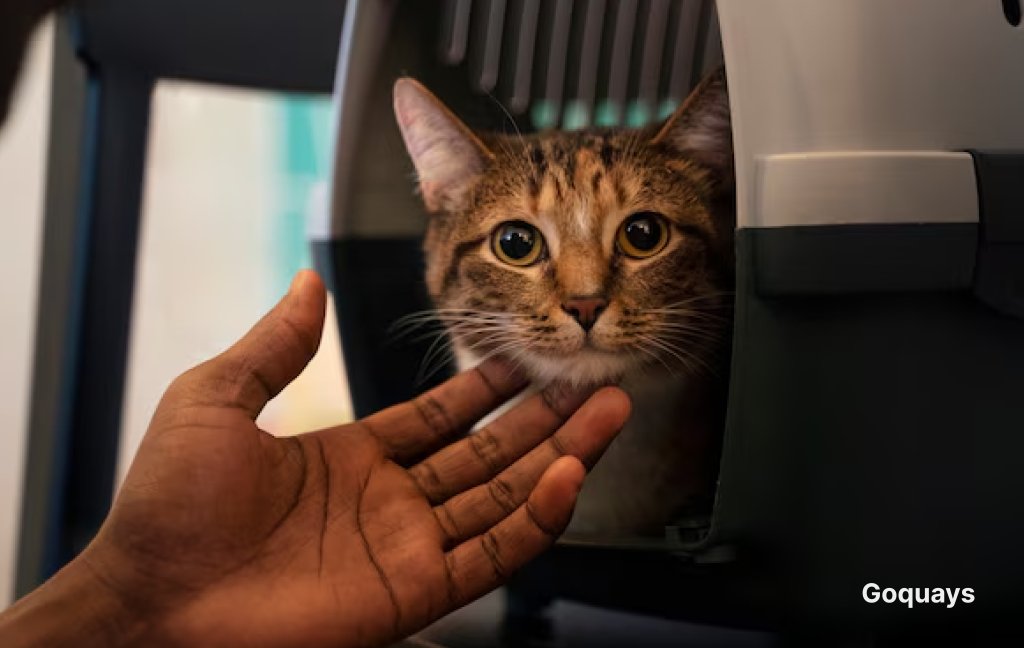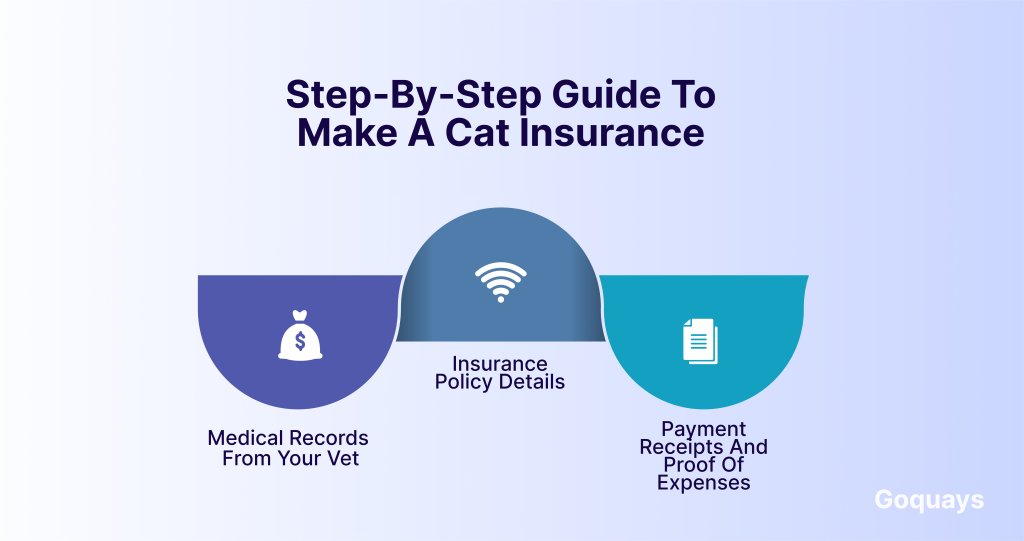Your cats are important to you which is why you insure them to protect them and when they get sick or involve in an accident, you make a claim of their insurance. But when it comes to making claim, it can be quite confusing because you have no idea of what to do, the documents required and the process of claiming.
In this guide, we will walk you through the step-by-step process of making a cat insurance claim. To ensure a smooth insurance claim process that will get you reimbursed as fast as possible. We will also provide you with tips on what to do if you ever find your claim rejected. Let’s explore every aspect to help you focus on your cat’s health.
Understanding your Cat Insurance Policy

Before making a cat insurance claim, it’s important to understand your policy fully—what it covers, what it doesn’t, and any limits that might affect your reimbursement. Many claims are delayed or denied simply because pet owners aren’t aware of their policy’s terms. Here’s what you need to know:
Know what’s covered
Different cat insurance policies offer varying levels of coverage. The most common types include:
- Accident-only insurance: This covers injuries resulting from accidents but does not include illnesses.
- Time-limited insurance: This covers illnesses and injuries but only for a set period (usually 12 months).
- Maximum benefit insurance: Pays up to a fixed amount per condition, but once the limit is reached, no further claims can be made for that condition.
- Lifetime insurance: The most comprehensive type, covering ongoing conditions for your cat’s entire life as long as you renew the policy each year.
Check your policy limits and excess
- Every policy has a claim limit, which could be per condition, per year, or over the lifetime of the policy.
- Excess fees are the amount you must pay out-of-pocket before your insurer covers the rest. This could be a fixed amount (e.g., £100 per claim) or a percentage-based co-pay (e.g., 20% of vet bills for older cats).
When can you make a claim?
- Most policies have a waiting period (typically 14 days) after purchase before you can make a claim.
- Pre-existing conditions (illnesses your cat had before the policy started) are usually not covered.
Understanding these details upfront can help you avoid unexpected costs and speed up your claims process.
Step-by-step guide to make a cat insurance

Gather necessary documents
Before submitting a claim, you will need to gather all the necessary documents to support your case. Missing or incomplete paperwork is one of the main reasons claims get delayed or denied, so being thorough at this stage can help ensure a smooth process. Here’s what you will need:
Medical records from your vet
Your insurer will require proof of your cat’s illness or injury. This includes:
- Vet consultation notes detailing symptoms, diagnosis, and treatment plans.
- Prescription details if your cat was given medication.
- Test results (e.g., blood tests, X-rays, ultrasounds) if applicable.
- Treatment history, including any previous conditions that might affect the claim.
Insurance policy details
Have your policy number and insurer contact details ready. Some providers require specific claim forms, which you can download from their website.
Payment receipts and proof of expenses
To make a claim, you will need
- Itemized vet bills showing individual costs for consultations, tests, and treatments.
- Proof of payment (receipts or bank statements) to confirm you have paid the bill.
Contact your insurance provider

Once you have gathered all the necessary documents, the next step is to contact your insurance provider. Each provider has specific requirements and procedures for filing claims. Reaching out early can help you avoid mistakes that may delay your reimbursement.
Notify your insurer
You can start your insurance claim through various methods;
- Online portals: Many insurers have digital claim submission tools on their website or mobile app.
- Email: Some providers accept scanned claim forms and receipts via email.
- Phone: Speaking directly to a representative can help clarify requirements and expected processing times.
Ask about claim processing time
Each insurer has different processing times, but claims take between 5 to 30 days to be reviewed and approved. Some key questions to ask are;
- How long does it take to process a standard claim?
- Will I receive updates via email, text, or an online tracking system?
- Are there any common delays I should be aware of?
Check if Pre-approval is needed
For expensive treatments (e.g., surgeries and long-term medications), some insurers require pre-approval before covering costs. If your vet suggests an expensive procedure, call your provider first to confirm whether it’s covered. By contacting your provider early and clarifying these details, you can ensure a smoother claim process and avoid unexpected denials.
Fill out the claim form correctly

It is important to fill out your claim form correctly, as this ensures your reimbursement is processed smoothly. Errors or missing information can lead to delays or even claim denials. Here’s how to complete it accurately.
How to access the claim form
Most pet insurance providers offer multiple ways to obtain a claim form:
- Download from the insurer’s website
- Request via email or phone
- Use an online claims portal
- Obtain one from your vet
Sections you need to complete
Most claim forms require the following details:
- Your personal information: Name, address, and contact details.
- Policy details: Policy number, insurer’s name, and type of coverage.
- Pet’s details: Cat’s name, breed, age, and microchip number (if applicable).
- Treatment details: Date of illness/injury, diagnosis, vet’s name, and description of treatment received.
- Payment details: Whether reimbursement should go to you or directly to the vet (if direct claims are available).
Common mistakes to avoid when filling claim form
- Ensure that you do not leave blank sections. Be sure to fill in all required fields to prevent processing delays.
- Do not forget to attach supporting documents. Be sure to include vet invoices, receipts, and medical records.
- Double-check for inaccurate policy numbers.
Submit your claim
Once you have filled out the claim form and gathered all required documents, it’s time to submit your claim. The method you choose can impact how quickly it’s processed, so it’s important to follow your insurer’s preferred submission process.
Ways to submit your claim
Most UK pet insurers offer multiple submission methods:
- Online submission (fastest option): Many insurers have a claims portal or allow you to upload documents via their website or app.
- Email submission: Some providers allow you to send scanned copies of your claim form and supporting documents via email.
- Vet-submitted claims: Some vets can submit claims directly to insurers on your behalf, especially if the insurer offers direct-to-vet payments.
Tracking your claim status
After submitting your claim:
- Check if your insurer offers online tracking.
- Call customer service if you don’t receive confirmation within a few days.
- Keep an eye on your email or SMS notifications for updates.
Processing time
- Most insurers take 5 to 30 days to process claims.
- Claims with higher costs may take longer, especially if further vet verification is needed.
What to do if your claim is rejected?

It can be quite frustrating to send a claim across only for it to be rejected. But you do not have to worry, as you could get your claim reconsidered if you take the right steps. Here’s what to do if your claim gets rejected.
Understand why your claim was rejected.
First, carefully review the rejection letter or email from your provider. Some common reasons for claim rejection include;
- Pre-existing conditions: The illness or injury was present before you took out the policy.
- Waiting period: You claimed within the initial waiting period (usually 14 days after the policy starts).
- Policy exclusions: Certain treatments, routine checkups, or dental work may not be covered. This is why it is important to scrutinize your insurance inclusions and exclusions before signing the policy.
- Incorrect or incomplete paperwork: Missing receipts, incorrect claim forms, or lack of vet confirmation.
- Claim limit exceeded: You have reached your annual or per-condition coverage limit.
How to appeal a rejected claim
If you believe the rejection is incorrect:
- Contact your insurer: Ask for a detailed explanation and clarify any misunderstandings.
- Provide additional documents: Submit missing paperwork, vet reports, or payment receipts.
- Ask your vet for support: A letter from your vet explaining why the treatment was necessary may help.
- Request a formal review: Many insurers allow formal appeals if you do not agree to their rejection decision.
When to escalate the complaint
If your appeal is unsuccessful, you can escalate your complaint to the Financial Ombudsman Service (FOS), which handles disputes between UK providers and customers. The Ombudsman can review your case independently and may overturn your provider’s decision if they find it unfair.
Tips on how to make a future claim?

Filing a cat insurance claim can sometimes feel overwhelming, but a little preparation can make your other future claims easier. Here are some tips to follow on your next claim.
- Have all your medical records organised: These records include your vet visit summaries, treatment plans and prescriptions, diagnostic test results,(x-rays.blood tests) and your vaccination records.
- Look out for policies with a simple claim process: Before you commit your pet to any insurance, compare various policies based on their claim procedures and processing times. When comparing them, look for online claim submission for faster processing, direct vet payment. This will help you avoid upfront costs and clear exclusions and limits to prevent unexpected rejections.
- Inquire from your vet about direct claims: This is because some vets work with insurance providers. This means you won’t have to pay out of pocket and wait for reimbursement. It also means your vet can submit the claim for you which reduces any paperwork for you.
Submit your claims on time: A lot of providers have a time limit for submitting claims. For example, within 60 days of treatment). If your claim submission extends beyond this period, it could mean automatic rejection.
Conclusion
Filing a cat insurance claim in the UK doesn’t have to be stressful. By understanding your policy, gathering the right documents, and following the correct submission process, you can increase your chances of a successful claim.
In conclusion, always check your policy coverage, excess, and exclusions before making a claim. Keep detailed medical records and vet receipts organized, and when it’s time to file, ensure your claim form is complete. If your claim is rejected, don’t be discouraged—review the reason carefully and appeal if necessary.





